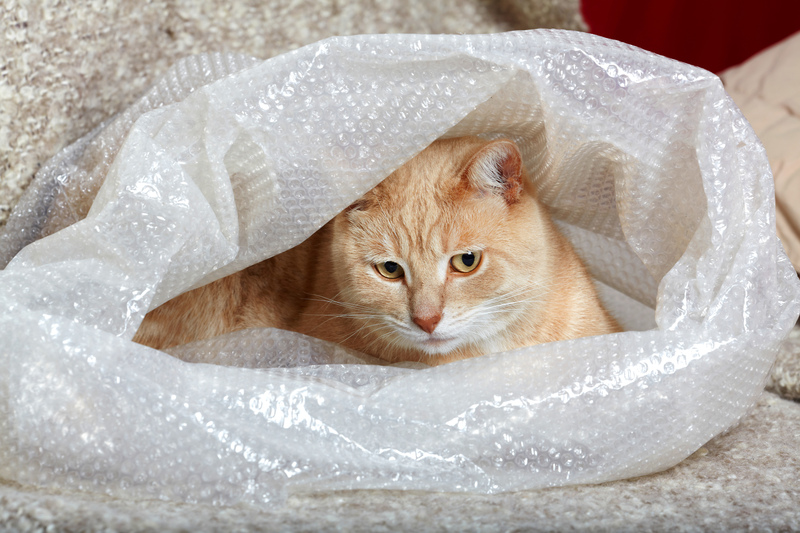Maximize Freezer Longevity with Proper Storage Methods
Posted on 18/05/2025
Maximize Freezer Longevity with Proper Storage Methods
Is your freezer working as efficiently as it could? Maximizing freezer longevity is about much more than just plugging it in--it's all about proper storage methods. The way you organize, pack, and maintain food in your freezer makes a significant difference in its lifespan, performance, and your food's quality. In this comprehensive guide, we'll break down the best techniques for prolonging your freezer's life while keeping your food as fresh as possible.
Why Proper Freezer Storage Matters
Freezers are an investment, both in terms of the appliance and the preserved food inside. Proper organization and storage extend your freezer's lifespan and ensure food safety. But why exactly is diligent freezer management necessary?
- Energy Efficiency: A well-organized freezer consumes less power and reduces your energy bills.
- Food Safety: Appropriately stored food minimizes the risk of contamination and freezer burn.
- Cost Savings: Reduce food waste by knowing what's inside and keeping it fresher for longer.
- Longevity: A properly maintained freezer is less prone to breakdowns and can last for years longer.

Understanding Your Freezer: Types and Differences
Before diving into storage methods, it's vital to understand the type of freezer you own. Whether an upright model or a chest freezer, each has unique characteristics impacting optimal storage:
- Upright Freezers: These feature shelving for easy access but may struggle with temperature consistency if overfilled or regularly opened.
- Chest Freezers: Offering more space and typically better temperature control, but can be tricky to organize due to their depth.
Tailor your storage technique to your freezer's design for maximum efficiency.
Principles of Effective Freezer Storage
Maintaining freezer longevity is straightforward, provided you follow a few core principles:
- Keep It Clean: Regular cleaning prevents buildup and makes it easier to organize.
- Allow for Airflow: Don't overpack; ensure cold air can circulate freely around items.
- Practice FIFO: "First In, First Out" ensures older food is used before newer items, reducing waste and spoilage risk.
- Use Quality Containers: Airtight containers and proper wrapping guard against freezer burn and extend food quality.
- Monitor Temperature: Ensure your freezer stays at or below 0?F (-18?C) for optimal preservation.
Best Practices for Freezer Organization
- Group Similar Items: Store meats, vegetables, baked goods, and prepared meals in dedicated zones.
- Label Everything: Use freezer-safe labels for dates and contents--no more mystery meals!
- Use Bins and Baskets: Particularly in chest freezers, bins prevent food from being lost at the bottom.
Step-by-Step Guide to Maximizing Freezer Longevity
1. Pre-Freezing Prep: Setting the Foundation
Before you even fill your freezer, make sure you're set up for long-term success.
- Defrost Regularly: Manual defrost models need a regular thaw to prevent frost buildup; even frost-free freezers benefit from periodic cleans.
- Check the Seal: Ensure door gaskets are intact and clean, maximizing insulation and efficiency.
- Cool Food Before Freezing: Placing hot foods inside raises the ambient temperature, making your unit work harder and impacting its longevity.
2. Optimal Packing Methods
- Flat Freezing: Freeze items like soups, sauces, and chopped vegetables in flat, thin layers inside freezer bags. They stack easily and thaw quickly.
- Vacuum Sealing: Removing air prevents freezer burn and improves both food preservation and space efficiency.
- Portion Control: Divide large batches into single-serving portions to avoid repeatedly thawing and refreezing food, which can wear out your freezer and degrade food quality.
3. Smart Organization for Easy Access
A well-organized freezer is less likely to harbor forgotten, expired items--not to mention, it's easier on your back and patience!
- First-Level Storage: Place items you use frequently near the front or top for quick access.
- Rotate Stock: Move older items forward/back or up/front as you add new groceries to the freezer.
- Utilize Stand-Up Storage: Use magazine files or dividers to keep frozen bags upright and easy to sift through.
4. Maintain Proper Temperature
The right temperature keeps food safe and protects your freezer's compressor from overwork.
- Set Your Freezer: Aim for 0?F (-18?C) or lower. Install an appliance thermometer for reliable readings.
- Let It Breathe: Don't block vents with food packages; clear airflow ensures consistent freezing.
- Power Outage Protocol: Keep the freezer closed during outages; a full freezer remains cold longer than a half-empty one.
5. Regular Maintenance
- Monthly Inspections: Look for frost, leaks, or unusual noises and address them promptly.
- Gasket Cleaning: Wipe down seals monthly--debris and food particles break down seals over time, shortening freezer life.
- Defrost as Needed: Don't allow frost to exceed 1/4 inch; it can impede performance and damage your appliance.
Tips for Freezing Various Types of Food
Different foods require unique storage methods to maximize their freezer lifespan and preserve their taste and texture. Here are tailored tips for common food categories:
Freezing Fruits & Vegetables
- Blanching: Many vegetables benefit from a quick blanch (boil, then ice-bath) before freezing, which kills enzymes that degrade flavor and color.
- Sugar Syrup: Coat cut fruit in syrup or sugar for better preservation and texture upon thawing.
- Spread It Out: Freeze berries in a single layer on a baking sheet first to avoid clumping, then bag them together.
Storing Meats and Seafood
- Double Wrap: For meat longevity, wrap portions in plastic wrap, then foil, or use vacuum-sealed bags.
- Remove Air: Always eliminate as much air as possible before sealing to reduce freezer burn.
- Label Cuts & Dates: Differentiating between various proteins and their freeze dates narrows down what should be used soonest.
Prepared Meals, Bread, and Baked Goods
- Cool Before Freezing: Let dishes cool to room temperature before storage to prevent ice crystals and sogginess.
- Portion Individually: Freeze slices or servings to minimize thawing large batches unnecessarily.
- Use Bread Bags: Store baked goods in freezer-specific bread bags or vacuum-sealed containers for best results.
Common Freezer Storage Mistakes to Avoid
Avoid these frequent mistakes to ensure freezer efficiency and prolonged appliance life:
- Overloading or Underloading: Too much food restricts airflow; too little means your freezer works harder to maintain temperature. Keep it about 70-85% full for optimal performance.
- Poor Packaging: Using thin plastic bags or containers that aren't air-tight accelerates freezer burn and food quality degradation.
- Ignoring Expiry Dates: Always use foods within recommended timeframes. Even frozen, nothing lasts forever.
- Ignoring Frost Buildup: Excess frost forces the compressor to work harder, causing premature wear and tear.
- Storing Hot Foods: Always cool foods before freezing; hot food warms up the entire appliance.
Top Freezer Storage Products and Accessories
Enhance your freezer organization and extend lifespan further with these handy products:
- Freezer Bins & Dividers: Keep small items corralled and prevent food loss.
- Vacuum Sealers: Remove air with ease to maximize freshness and protect the compressor.
- Stackable Containers: Maximize space and streamline stacking within all freezer types.
- Freezer Labels & Markers: Essential for clear date and content marking.
- Appliance Thermometer: Ensure your freezer stays within the safe freezing range.
How to Tell If Your Freezer Needs Repair or Replacement
Naturally, even the best storage practices can't counteract mechanical failure forever. Be alert to these warning signs suggesting your freezer may need professional attention--or replacement:
- Temperature Fluctuations: Food not staying frozen or noticeable thawing between refreezing cycles.
- Excessive Frost: Frost buildup or ice sheets indicate seal leaks or defrost system failure.
- Noisy Operations: Unusual noises, humming, or banging can signify compressor or fan problems.
- Persistent Odors: Lingering smells, even after cleaning, may mean food has spoiled deep within seals or crevices.
If you notice these issues, consult a professional for repair or consider replacing older units to ensure food safety and maximize efficiency.

Conclusion: The Power of Proper Freezer Storage
Maximizing freezer longevity with proper storage methods is achievable for every household. Organize efficiently, maintain regularly, use the right containers, and keep your appliance at the right temperature to ensure both your freezer and your food last as long as possible.
By investing a little extra time and thought into freezer organization and storage, you'll save money, cut down on food waste, and extend the life of your valuable appliance. Implement these tips today and enjoy the benefits of an efficient, long-lasting freezer for years to come!
Frequently Asked Questions (FAQ) on Freezer Longevity and Storage
- How often should I defrost my freezer?
Manual-defrost freezers should be defrosted whenever frost exceeds 1/4 inch. Frost-free models need only occasional cleaning unless issues arise. - What's the best way to prevent freezer burn?
Store food in airtight packaging, eliminate as much air as possible, and avoid inconsistent temperatures by not overloading or underloading. - Can I refreeze thawed food?
Refreezing can be risky for texture and safety. If food has thawed but remained below 40?F (4?C), it's usually safe, but quality may suffer. - How long can meat stay in the freezer?
Beef, pork, and fish can typically be kept 4-12 months. Always check for freezer burn or strong odors before use. - Is it bad to store food right against the freezer walls?
Yes; it can impede airflow and promote uneven freezing or frost buildup. Always leave a gap around the edges if possible.
For more expert tips on freezer storage and home appliance care, keep exploring our site!





